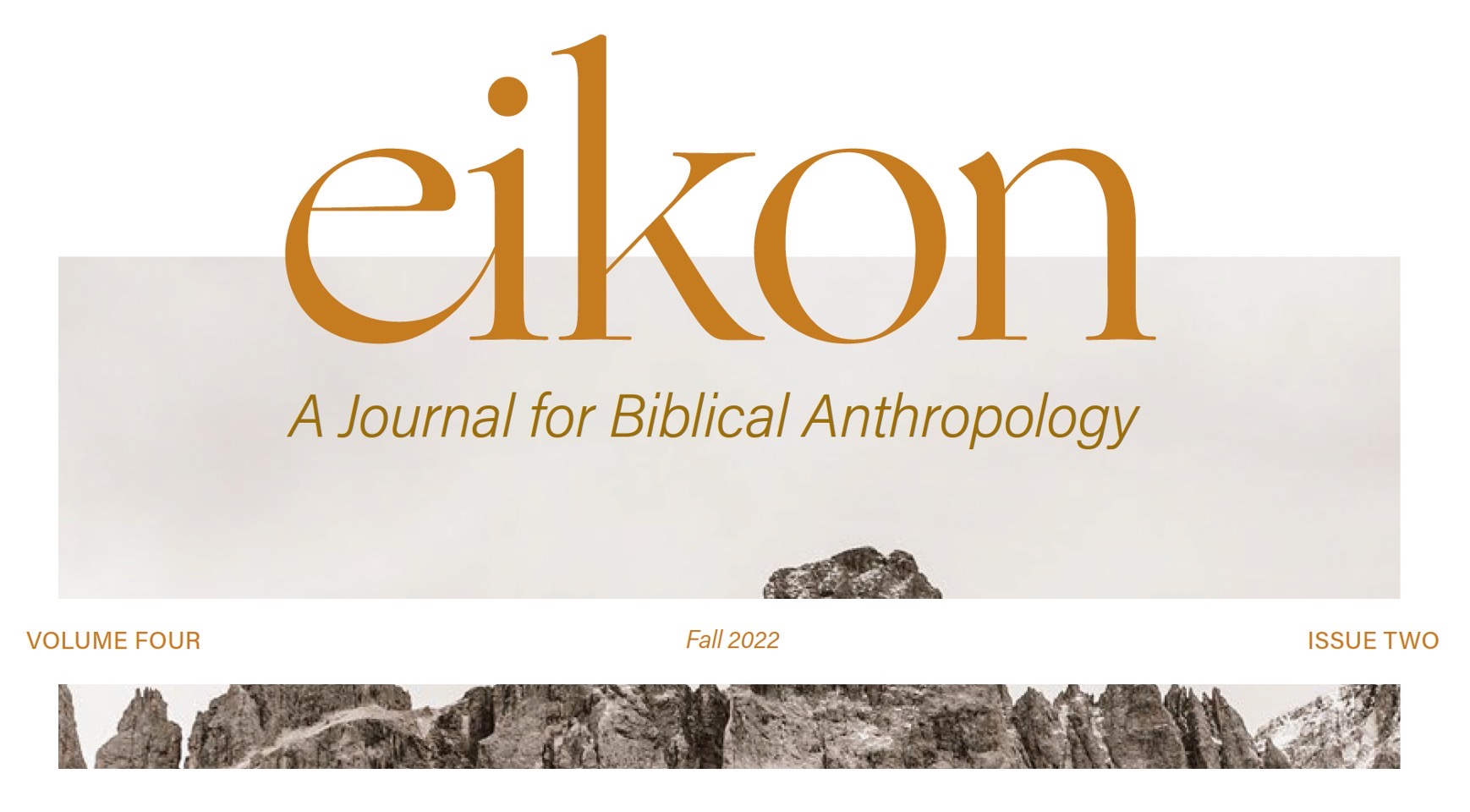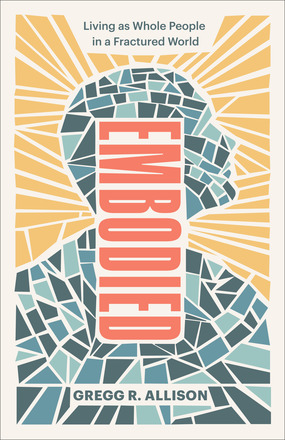Editors note: the following book review appears in the Fall 2022 issue of Eikon.

Gregg R.Allison. Embodied: Living as Whole People in a Fractured World. Grand Rapids, MI: Baker, 2021.
 The human body can be a neglected aspect of our Christian theology, but it is at the center of current cultural attention. We acknowledge that our bodies are part of the way God made us, but at times we can hold to a gnostic view that dispenses with thinking much of the body since we will simply slough it off someday. However, this kind of attitude among Christians can overlook the attention the world is giving to the body and, more importantly, misunderstands biblical teaching on how we are to think of ourselves as embodied beings. Increasingly, questions are posed regarding sexuality, physical presence in a particular space, and transhumanism, each of which touch on aspects of our being embodied beings.
The human body can be a neglected aspect of our Christian theology, but it is at the center of current cultural attention. We acknowledge that our bodies are part of the way God made us, but at times we can hold to a gnostic view that dispenses with thinking much of the body since we will simply slough it off someday. However, this kind of attitude among Christians can overlook the attention the world is giving to the body and, more importantly, misunderstands biblical teaching on how we are to think of ourselves as embodied beings. Increasingly, questions are posed regarding sexuality, physical presence in a particular space, and transhumanism, each of which touch on aspects of our being embodied beings.
Gregg Allison, professor of Christian Theology at Southern Seminary, delves into a variety of topics related to the human body in an effort to help readers understand and apply sound biblical-theological truth. Again, this kind of effort is essentially cultural, as all manner of questions are being asked and efforts made to deny our God-given embodied realities. Theologically, the idea of embodiment touches upon every major area of doctrine is some fashion. Thus, it is essential that readers engage with such teaching for the sake of their convictions and the ways they live and speak in the world.
Allison’s book is broken down in a very consistent way, progressing through pertinent topics in a helpful fashion. Each chapter begins with a chart, which highlights the overall direction of the chapter, detailing what topic the reader will consider, the big idea, which is teased out biblically and theologically, and then offers application, usually consisting of diagnostic questions. Each chapter also has a section entitled “For the Curious,” which delves into further ideas that typically address present cultural issues for the church to address. Within the actual chapters, the author speaks of the creation of the body, sex and gender, that we are particular individuals with a particular context, sociality, sexuality, the incarnation of the Son of God, the sanctification of the body, blessings experienced and discipline needed for the body, worship as an embodied being, clothing, suffering and healing, death of the body, and the future of the body.
The foundation of Allison’s work rests on twin claims: God designed and created us to be embodied individuals and we are our bodies (more specifically, we are embodied souls). These points are amply demonstrated and serve as foundation for everything else the author claims. Because we are designed and created by God and because we are embodied souls, there are implications for the way we steward our bodies, are sanctified, how we worship, what it means to die, and what we can expect at the resurrection. Allison’s book persuasively demonstrates that engaging with these often neglected truths is crucial for our overall theology.
This work is helped by clear definitions throughout, as well as a willingness to tackle the many difficult issues inherent in anthropology in general and embodiment specifically. Allison’s strongest sections include his chapters on gender and sanctification. Certainly, gender and sexuality must always be spoken of from a biblical worldview, but the need for such teaching is especially vital in today’s society. With so much talk surrounding gender dysphoria, sex-reassignment surgeries, and transgender ideology, the author astutely summarizes biblical teaching on the various topics and issues appropriate application. In a day where we are pressed toward androgyny on the one hand or toward the absolute distinctiveness of the genders on the other, Allison warrants his case to say, “Men and women uniquely express common human traits as men and women. . . . To illustrate this view, capacities such as reasoning, emotion, will, and purposing aren’t gender-specific but are common human capacities that are and will inherently be expressed by women and men in ways that reflect their femaleness and maleness” (47). It would have been helpful if the author had pressed this idea more into the kinds of roles men and women are called into in certain contexts, but Allison brings helpful balance to the conversation.
 The chapter on the sanctified body also deserves attention. While people often think of sanctification in terms of “spiritual” issues, they can overlook the spiritual aspect of glorifying God in our body. As such, Allison calls out such sins as lust, gluttony, and sloth, the latter rarely receiving attention. These sins are deadly, and we need to recognize that overcoming such sinful habits as embodied beings is essential to our spiritual growth. He also addresses physical wellness through sleep and rest (work is covered in a different chapter). As with the entire book, the author addresses these issues biblically and theologically, but also gives a number of practical insights and suggestions for our pursuit of proper rest. It is not spiritual to avoid such matters, our body is important because we were designed and created by God, and he calls us to be good stewards.
The chapter on the sanctified body also deserves attention. While people often think of sanctification in terms of “spiritual” issues, they can overlook the spiritual aspect of glorifying God in our body. As such, Allison calls out such sins as lust, gluttony, and sloth, the latter rarely receiving attention. These sins are deadly, and we need to recognize that overcoming such sinful habits as embodied beings is essential to our spiritual growth. He also addresses physical wellness through sleep and rest (work is covered in a different chapter). As with the entire book, the author addresses these issues biblically and theologically, but also gives a number of practical insights and suggestions for our pursuit of proper rest. It is not spiritual to avoid such matters, our body is important because we were designed and created by God, and he calls us to be good stewards.
In what is an excellent book overall, two shortcomings should be noted. First, there were times where Allison raised certain questions, which were good and fitting, but didn’t answer them. This is especially true in the application section of each chapter. While there are exceptions, much of the content in these sections consisted of diagnostic questions, which are helpful, but some could receive more definitive answers. This is particularly the case if such a work would be used in a church small group or class. Another example would be in the chapter on worship, where Allison addresses tattoos and body markings in his “For the Curious” section. Again, there are some excellent questions, but readers may be looking for more definitive guidance.
A second shortcoming, which was more of a missed opportunity, was the neglect of dealing with the need to physically gather in worship (or not). We are not entirely sure where the author lands on this issue because he does not address it. However, in our recent days of the pandemic when many churches closed their doors for physical worship gatherings, it would seem there was an opportunity to address such a timely issue. There is certainly literature that has come out in the last couple of years that the author could reflect upon and then offer a biblical response.
Overall, Allison’s work is a breath of fresh air in its clarity, scope, and orientation toward application. Such a work should be read by pastors and given to other leaders for use in church life. We face many anthropological issues in our day, and Allison gives us the kind of guidance we need to be educated within the church and to engage with those outside the church.
You, too, can help support the ministry of CBMW. We are a non-profit organization that is fully-funded by individual gifts and ministry partnerships. Your contribution will go directly toward the production of more gospel-centered, church-equipping resources.